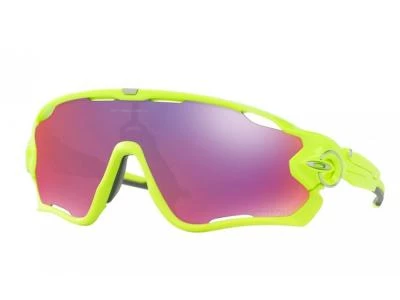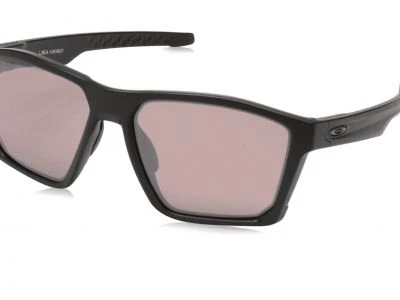Why golfers need the right sunglasses
Sunglasses designed for specific sports such as golf can seem like overkill – after all, sunglasses are just glasses with dark lenses.
Well, that's true up to a point. But in sports like golf, where players have been known to battle through four seasons in a single round, there is a demand for sharpness of vision in all light conditions.
Here we attempt to point out the differences between day-to-day sunglasses and specialist sports eyewear, so you at least get a better idea of what to look out for when choosing to buy some sunglasses for the golf course.
Sunglasses designed for the golfer will have features that you won't find in regular casual eyewear as they need to be both rugged and stylish on top of providing much-needed eye protection for those that spend long periods outdoors.
Golfers will, after all, be on the lookout for bright, crisp vision across a whole spectrum of weather conditions and not just bright sunlight. They need glasses that offer shade from the sun and a clear vision on the cloudiest of days.
Other features that fall into the frame when it comes to buying golf sunglasses will include comfortable all-day wear and the sturdy durability that is generally to be expected from any sports-related product.
Above all, golfers will want the right lenses for the job. In normal conditions, the golfer is most likely to be in a green environment under a blue or pale grey sky. The best lenses for use on the greens will be those that absorb blue light.
Standard lenses protect against strong sunlight by darkening vision. But this also reduces contrast, and loss of contrast is precisely what the golfer does not want. Poor contrast makes it difficult to follow the ball through the air and even harder to gauge distances or topography, especially if there are scudding clouds overhead and frequent changes between light and shadow.
Lenses that absorb light at the blue end of the spectrum will both protect the eyes and give the most significant colour contrast, with greens more sharply defined and the white of the ball more evident.
Colour contrast is needed when lining the ball up for a shot, following its trajectory against a blue or grey sky, determining the best club for that chip to the green or lining up for a crucial putt.
Yellow or orange-tinted lenses, which filter out blue spectrum light, are also useful for enhancing contrast on green surfaces. Depth perception is improved, and those tricky breaks on the green can more easily be identified.
That is not to say that amber tinted lenses are always the best for a day on the golf course. Each lens shade has its advantages under particular conditions but generally speaking, warmer lens colours are best for clear vision on the golf course.
Here is a breakdown of some of the advantages of different lens tints for conditions the average golfer might encounter out on the fairways.
Grey tinted lenses are useful on bright, sunny days, and they avoid the colour distortion of other lenses, but they will lack the contrast enhancement of warm coloured lenses.
Yellow lens tints help cut glare and improve contrast, notably on bright days with a high thin cloud cover. The darker the yellow, the higher the contrast and amber tints can be the ideal choice in changeable weather conditions.
Orange and copper tinted lenses will also increase contrast and depth, a particular help in identifying contours on the fairway and breaks on the greens. Still, stronger tones can result in some colour distortion.
Colours towards the redder end of the spectrum such as rose, magenta, violet and brown are also worth considering but, again be aware that the colours will no longer look as natural.
Overall amber and grey lens tints are much more widespread on the golf course as they prove to offer the best combination high contrast, low colour distortion and visual clarity.
Lenses need to offer more than visual clarity, and the level of eye protection is a significant factor when choosing a pair of sunglasses for golf.
Only the cheapest sunglasses now come without 100% filtering of dangerous UV light, but it is still always a good idea to check the label before making that purchase.
Ultraviolet radiation comes in three flavours – UVA, UVB and UVC. The latter need not bother us as just about all of it is filtered out in the atmosphere, but UVA and UVB light will get through, especially on bright sunny days and even when there is some cloud cover.
UVA radiation can cause retina damage and can even trigger skin cancer. UVB rays are what give you sunburn, trigger ocular degeneration in the longer term and may also cause temporary blindness.
And don't be fooled into thinking darker lenses will automatically result in better UV protection. Darker lenses may actually offer no UV protection at all while perfectly clear lenses can still filter out 100% of harmful UV light.
You may also need to replace your sunglasses more often than you think. Recent research suggests lenses may require replacing every two years as prolonged exposure can lead to deterioration, not only in the level of UV protection but in the standard of impact resistance too.
Some golfers prefer to wear sunglasses with polarised lenses. Polarisation cuts out the horizontal light waves while letting through vertical ones.
Polarised lenses help to reduce glare on flat surfaces and thus combat distracting reflections of large open surface such as fairways, greens and lakes. But some players find polarised lenses can also affect depth perception, so the choice pretty much comes down to personal preference.
Specialised coatings can cut out reflections without affecting clarity and can offer precise vision across the whole lens. Oakley sunglasses boast a range of patented technologies that claim to do just that.
Gradient lens coatings are of little use on the golf course where light conditions can vary. Photochromic lenses that alter according to light conditions can help but not always. When clouds are scudding across the sky, any transition delay can be disconcerting.
Oakley is noted for its new Prizm lenses which enhance contrast for specific colour ranges and sports environments including one aimed at golfers, but they do come with a hefty price premium.
Golf glasses need to be robust
Important considerations when choosing sports sunglasses is their durability and a comfortable fit. Out in all weathers, golfer sunglasses must be able to withstand both heavy use and be light and comfortable to wear for extended periods.
A prerequisite for the golfer is a secure fit on the face; they must not slip, especially during the golf swing. Glasses that slide down the nose when lining up a golf shot are definitely out.
Sunglasses must also be lightweight as the golfer may spend several hours playing an 18-hole course. Metals such as titanium are both extremely light and very durable while nylon infused polycarbonates are the material of choice for plastic sunglasses.
Golf is an outdoor sport played mostly from spring to autumn, but it is a game for all seasons, and only the most inclement of weather will keep the enthusiast in the cosy clubhouse.
Golf can be played in almost any weather and indeed it is a test of a golfers ability to be able to play in a variety of conditions, under calm, sunny skies or blown about in wet and windy weather, say on a links course close to the shoreline.
Although sunglasses are worn mainly to protect the eyes from harsh sunlight when it comes to golf, they must also perform many other functions. Golfers need to be able to see the ball at close range and long distances, often in murky weather and overcast conditions.
Golf sunglasses also to fit tightly to the head while at the same time being light and comfortable for all-day wear. They will need to be durable and hardwearing too as they may often be removed, carried in the pocket or pushed back on top of the head.
Many favourite brands now provide sunglasses with the golfer or sports enthusiast in mind and these include famous brands like Oakley and Ray-Ban. Golf sunglasses can vary in price, but the adage of getting what you pay for is most apposite here, and low-cost sunglasses are unlikely to bring down that handicap.



